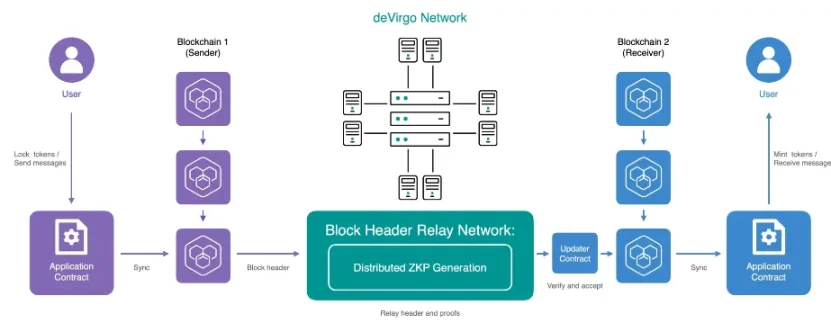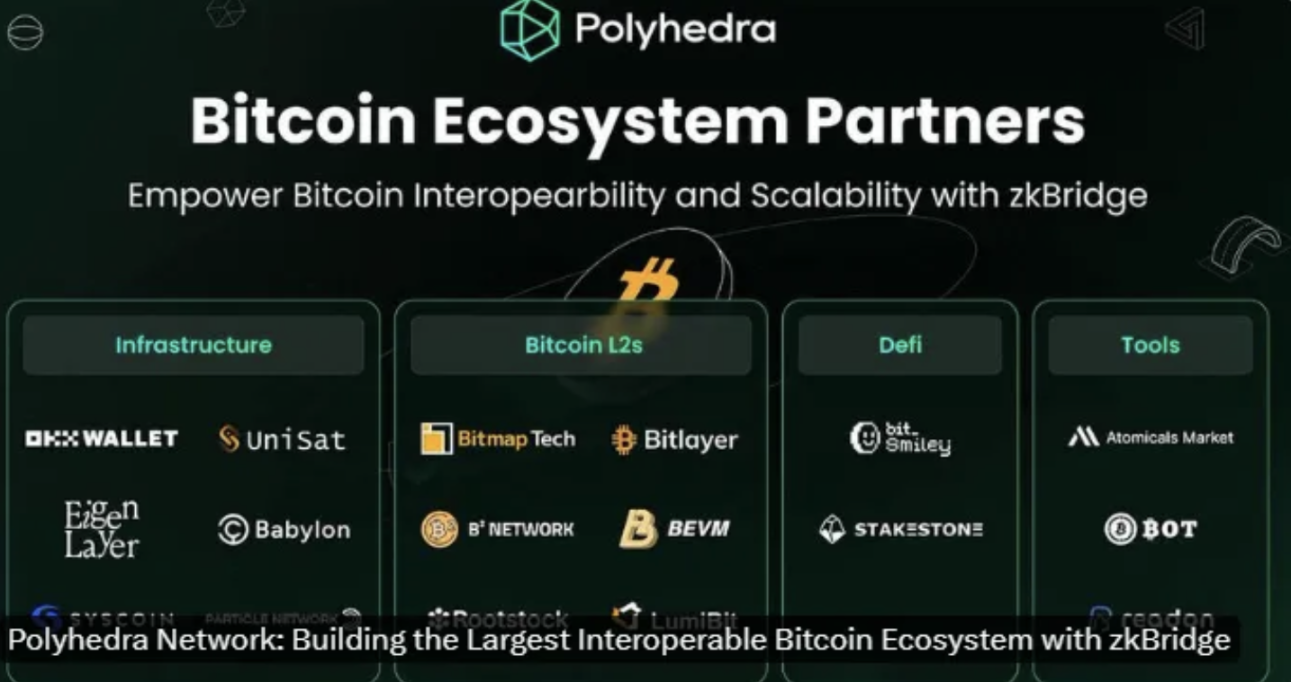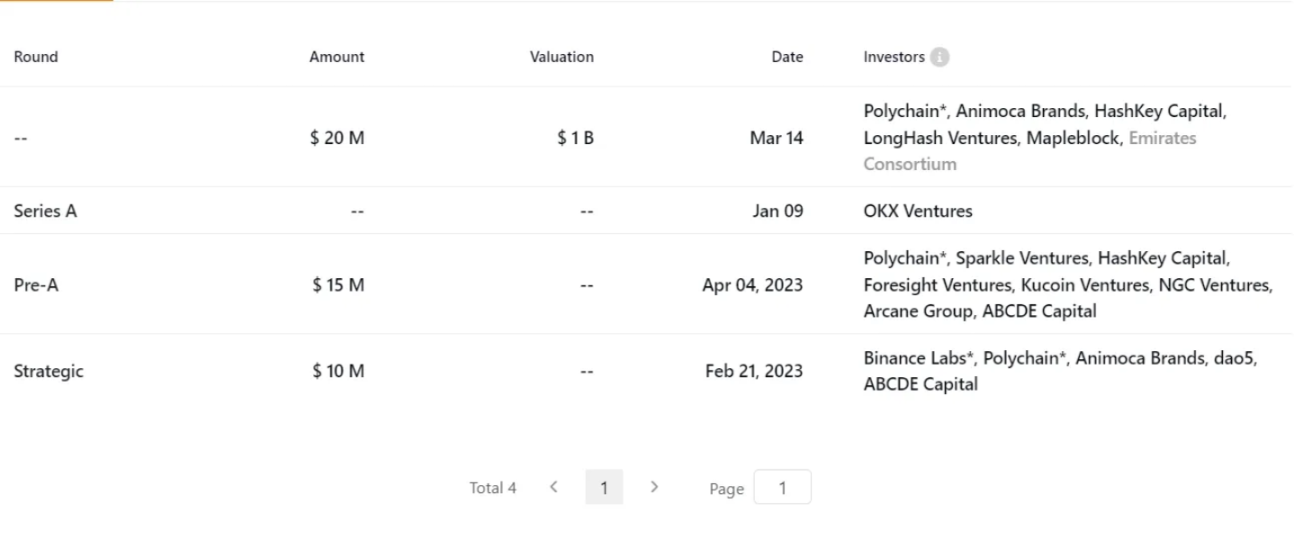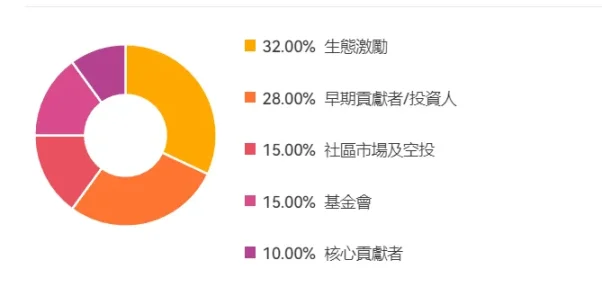Learn about Polyhedra in one article: covering 25 networks, a cross-chain giant based on ZK technology
- 王林forward
- 2024-03-22 13:20:40818browse
The foundation of an industry’s development is to create more value for society, so blockchain is always moving forward around two major themes, one is the improvement of infrastructure, and the other is large-scale application. In terms of infrastructure, the public chain is the foundation of the foundation, and the public chain is also likened to the operating system of Web2. After the 2017 bull market, the industry realized the limitations of ETH's performance and started a new public chain construction journey to increase TPS and reduce GAS. EOS was the star at the time. The PPT stated that it could exceed one million TPS, but it eventually fell. . Fortunately, during the 21-year bull market, excellent public chains such as Solana, BNB Chain, Avalanche, and Fantom emerged.
It’s 24 years, and the vigorous development of ecological projects has given rise to different demands for public chains. The improvement of modular infrastructure makes "one Dapp, one public chain" low-cost, simple, and convenient (see my discussion on modularization for details). This will inevitably lead to a large-scale increase in the number of public chains. According to incomplete statistics, there are at least several hundred public chains in existence. In this bull market, volume growth is at least 10x higher. We use a simple math to illustrate that when the number of public chains is 10, there are 45 combinations of pairs. When the number of public chains expands 10 times to 100, there are 4950 combinations of pairs, an increase of 110 times.
So in this bull market, cross-chain demand is also increasing exponentially. And the demand for cross-chain is not only the previous asset transfer, but also includes messaging, data sharing, multi-chain deployment, liquidity sharing, etc. Polyhedra Network aims to build the next generation of Web3 interoperability and scalability infrastructure, with its core relying on advanced Zero-Knowledge Proof (ZKP) technology. By providing trustworthy minimal and efficient interoperable solutions.
Polyhedra Network is designed to enable asset transfer, messaging and data sharing between multiple Web2 and Web3 systems. To date, Polyhedra has successfully developed and launched several next-generation zkSNARK protocols and innovative ZKP-based products. These include zkBridge, a tool that supports cross-chain asset and data interoperability, covering more than 25 blockchain networks. These innovative products of Polyhedra make interoperability between different blockchains simpler and more efficient, bringing new possibilities to the development of the entire blockchain ecosystem.
Technical Features and Highlights
Polyhedra Network’s engineering team relies on its expertise in cryptography to create a series of basic algorithms and zero-knowledge protocols, such as Libra, Virgo, deVirgo, Pianist, Marlin , Gemini, and Orion, these protocols set new standards in the industry, providing the fastest prover times, significantly reduced proof sizes, and minimized on-chain verification costs. These foundational technologies are at the heart of Polyhedra's efforts to improve the scalability, security, and interoperability of blockchain systems, enabling solutions to some of the most pressing challenges in digital infrastructure.
Core Data
- The number of cross-chain transfers is as high as 20 million.
- 40 million proofs verified.
- Connected to more than 25 public chains.
- Has the fastest Zero-Knowledge Proof (ZK) algorithm.
- Have the fastest consensus proof.
- Inventor of zkBridge.
- Inventor of zero-knowledge algorithm: Invented 7 algorithms in total.
- Participate in OKX activities: 141m, get 500K Polyhedra network tokens.
- Participate in the Binance Web3 wallet event: get 556K, 1 million Polyhedra network tokens.
- X platform followers reached 964.3K.
- Discord platform reaches 545K followers.
Products and Services
zkBridge
zkBridge is the core product of Polyhedra Network and aims to become a trustless cross-chain bridge. It utilizes zkSNARK technology to allow the prover to effectively prove the state transition on the sender chain to the receiving chain. zkBridge includes a block header relay network and an update contract, and implements multiple functions through modular design, such as message passing, token transfer, and state changes of other computing logic running on different chains.
zkBridge ensures strong security through concise proofs while reducing on-chain verification costs, and its workloads are far faster than existing solutions. It provides trust-minimized and efficient cross-chain infrastructure for layer1 and layer2 interoperability, effectively solving the challenge of connecting different blockchain networks. zkBridge does not add additional trust assumptions, ensures the correctness of the system, and provides important support for the development of the blockchain ecosystem.
zkBridge uses the structure of zero-knowledge proof to verify the validity of the consensus between the two blockchains. Since the release of the Alpha version of the Autonomous Network, it has facilitated more than 20 million cross-chain transactions, covering more than 25 layer1 and layer2 blockchain networks.

zkLightClient
zkLightClient is developed by the Polyhedra Network team for the LayerZero cross-chain protocol. It provides a safe and efficient cross-chain protocol for the interoperability of layer1 and layer2. chain infrastructure. This technology is fully integrated with LayerZero’s messaging protocol, allowing application developers to develop cross-chain protocols using zero-knowledge proof technology through simple integrated configuration. zkLightClient has securely transferred over 4.5 million messages. LayerZero now uses zkBridge as the default decentralized verification network (DVN) for many paths.
Cross-chain messaging with the btc chain
Cross-chain messaging with the bitcoin chain is a new demand in recent times. The booming development of the Bitcoin ecosystem in 2023 and the emergence of Bitcoin layer 2 have led to a surge in cross-chain demand for BTC. However, Bitcoin is a relatively special public chain, which requires a new solution to achieve cross-chain message transmission. zkBridge launches Bitcoin messaging protocol designed to significantly increase Bitcoin interoperability. This move aims to enable the Bitcoin network to interact with other layer2 and layer2.
When Bitcoin is used as the sender chain, it is fully compatible with the current zkBridge framework. zkBridge enables update contracts on the receiving chain (such as ETH) to directly verify Bitcoin's consensus, as well as verify every transaction on Bitcoin by verifying Merkle proofs. This compatibility ensures that both consensus proofs and transaction Merkle proofs on Bitcoin are fully protected via zkBridge.
If the Bitcoin chain is the receiving chain, since Bitcoin does not have smart contracts, it is incompatible with the zkBridge framework. The method adopted is to use the POS mechanism to allow verifiers to pledge the native tokens of the sending chain. If the sender chain is Ethereum, verification requires staking ETH. Authorized to write data on the Bitcoin network, the Multi-Party Computation (MPC) protocol is used to ensure consensus is reached on the correct message sent.
Messaging with the btc chain already supports Ordinals, BRC-20, and Atomicals. Projects using Polyhedra include Atomicals Market, Babylon, Bitmap, B2Network, Eigenlayer, and many more.

Financing situation

- In April 2023, it received a 15 million Pre-A round of financing led by Polychain.
- In January 2024, it received a Series A round of financing from Okx Ventures, with an undisclosed amount.
- In March 2024, Polyhedra Network’s valuation reached US$1 billion in the latest round of private financing, attracting investments including Polychain, Binance Labs, OKX Ventures, Animoca Brands, Hashkey and UOB Ventures By.
- Token System
 Polyhedra’s token name is ZK, with a total supply of 1 billion. According to the public data above OK
Polyhedra’s token name is ZK, with a total supply of 1 billion. According to the public data above OK
- 28% is for early investors and investors
- 15% is for community market and airdrop
- 15% for the foundation
- 10% for core contributors
- The specific release rules have not been announced yet
However, zk will be conducted for users before going online If there are less than 20 airdrops, users can choose tokens after the new mainnet is launched and receive an additional 10% compensation. ERC20 tokens can also receive an additional 10% compensation.
The above is the detailed content of Learn about Polyhedra in one article: covering 25 networks, a cross-chain giant based on ZK technology. For more information, please follow other related articles on the PHP Chinese website!
Related articles
See more- Blockchain industry, how can an ordinary person make money in it?
- What are the four core technologies of blockchain
- How to implement blockchain development in PHP?
- What is the difference between USDT and Bitcoin?
- Which platforms can buy and sell Bitcoin in China? Top ten domestic Bitcoin trading software apps

